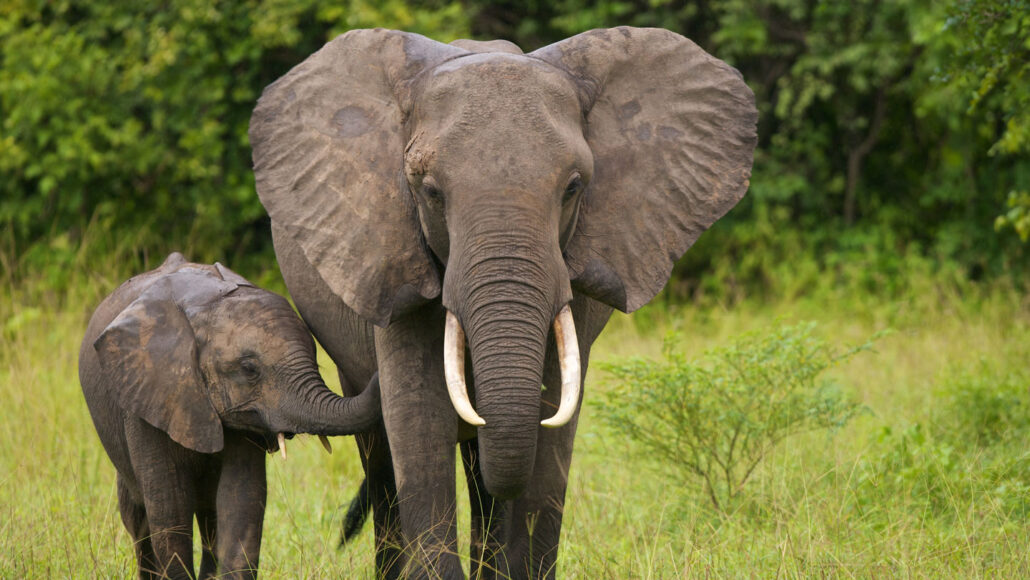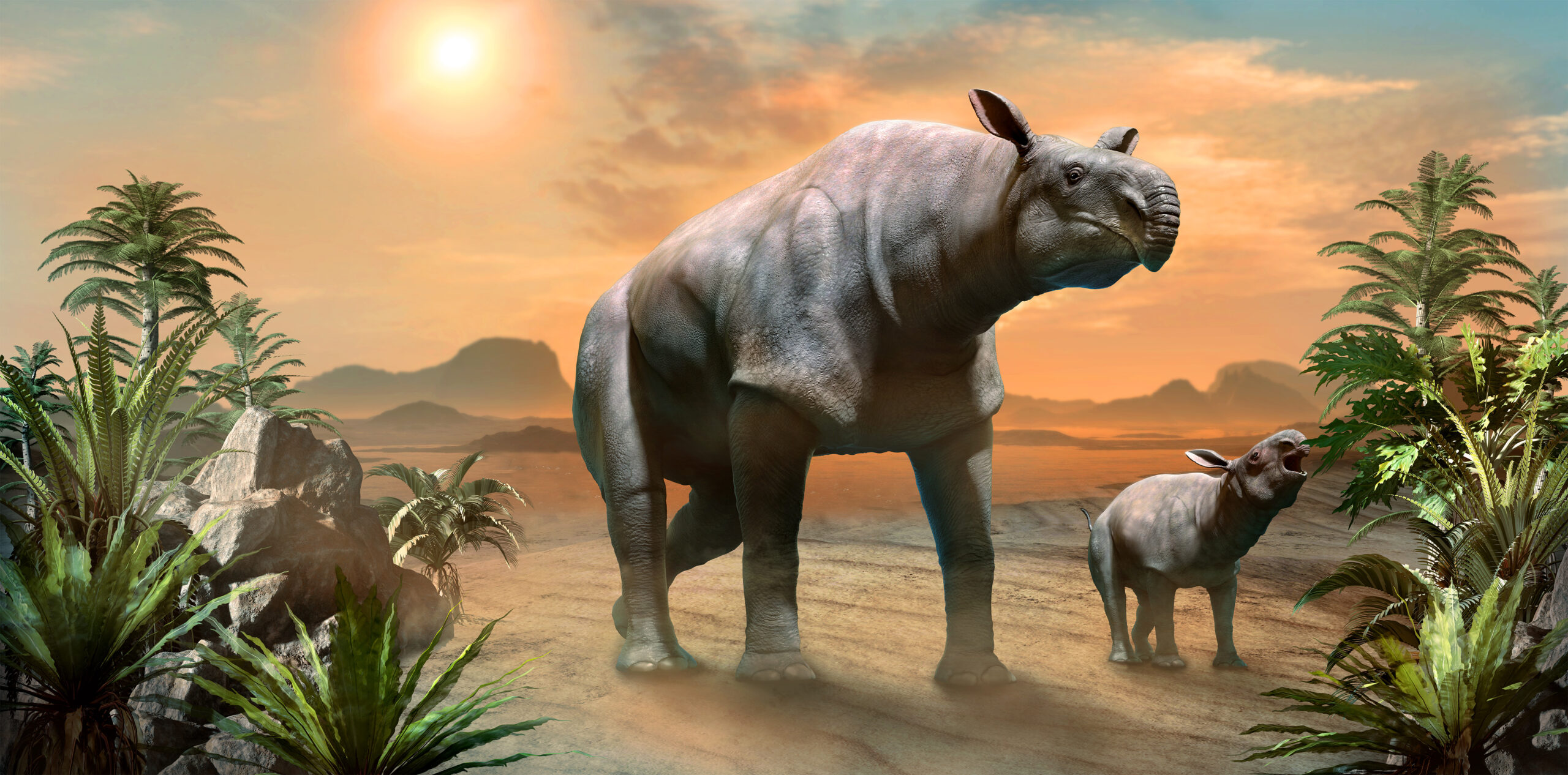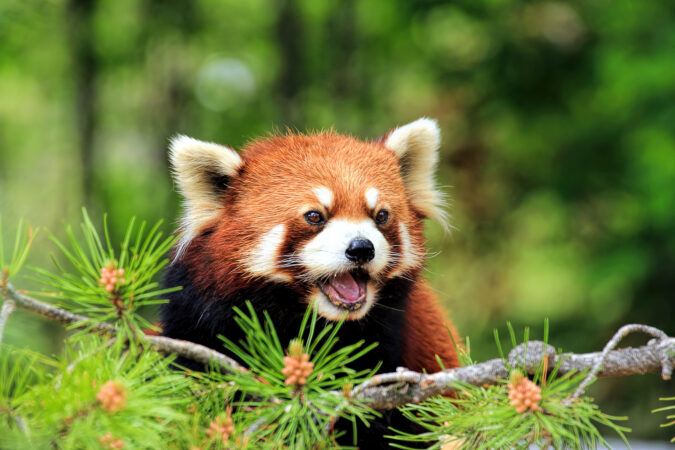Monstrous mammals would break the body rules
Our imaginations have no limits — but body size does

African elephants’ huge ears aren’t just for fashion. They are filled with blood vessels to help the mammals release heat into the air. Heat is a big limit on big animal size.
JohanWElzenga/iStock/Getty Images Plus
Giant mammals stomp through our imaginations. Clifford is a big red dog. Jack climbs a beanstalk to meet a giant. Ella Enchanted goes to a giant couple’s wedding. In Disney and Pixar’s Turning Red, Mei turns into a red panda the size of a grizzly bear. And if you think that’s big, wait until you see her mom. But giants don’t terrorize our real lives. Why? It has to do with heat.
Mammals can only get so large on land, explains Felisa Smith. She’s a paleoecologist — someone who studies ancient ecosystems — at the University of New Mexico in Albuquerque. In theory, she says, if animals were only limited by the amount of weight their legs could carry, a four-legged animal could get as large as 109 metric tons (120 short tons). That’s a bit larger than a 737 airplane or the largest dinosaurs to ever roam the planet. But there’s no real use in being that massive. “Your legs would have to be so big to support your body that you couldn’t move,” Smith says.
Today’s largest land mammals — male African bush elephants (Loxodonta africana) — are tiny in comparison. They average only a measly 6 metric tons (almost 7 short tons). Paraceratherium, the largest known land mammal, topped out at around 16 metric tons — well below that supposed 109-metric-ton limit. Thundering across Europe and Asia, some 30 million years ago, it looked a bit like a cross between a giant rhinoceros and a huge horse.

Blame heat for land mammals’ (relatively) small stature. Mammals are endotherms. They have to keep their bodies at a constant warm temperature. They digest food to generate energy to stay warm. Today’s reptiles, in contrast, are ectotherms. Their body temperature varies with the environment. This means reptiles can’t be active in the cold like mammals. But they also save a lot of energy by not generating their own heat. “If you take a reptile and mammal of the same size, the mammal needs 10 times more energy than the reptile does,” Smith says.
The biggest animals are all herbivores. They get their energy from plants, which get their energy from the sun. And to consume enough plants to get really big, an herbivore needs a huge home range, Smith says. Each individual Paraceratherium needed so much space that it would have to travel long distances to find a mate. The species munched its way across most of Europe and Asia — all of North America would not have been big enough.

Educators and Parents, Sign Up for The Cheat Sheet
Weekly updates to help you use Science News Explores in the learning environment
Thank you for signing up!
There was a problem signing you up.
But really big herbivores risk generating too much heat. These animals have to break down lots of tough, fibrous plant material. Gut bacteria break down the plants in a process called fermentation. The mammal gets the energy it needs, but fermentation also creates heat. “You have this internal fermentation chamber that is actually producing energy and heat … and then you’re endothermic. It’s kind of a disaster,” Smith says. Get too hot, and the mammal will die. So it has to release that extra heat.
Body modifications can help. African elephants, for example, have evolved huge ears. Blood vessels in those ears help dump heat into the air. Elephants can even wave their ears back and forth, creating their own breeze to whisk the heat away. They also have very little hair, so heat doesn’t get trapped close to their skin.

There are other reasons why being big just isn’t all that practical. Monstrous size also means monster appetites, whether an animal is eating plants or something else. Clifford the big red dog would go through a lot of dog food. The giants would need to eat a lot of snacks. And all of them would probably be constantly trying to stay cool.
In Turning Red, Mei turns into a giant red panda (Ailurus fulgens). Real red pandas are much smaller — about five kilograms (11 pounds) on average. Red pandas also live in trees, which means they can’t get too giant. And while Mei might find a home in the California redwoods, there would never be a tree big enough to support her mom. Her red panda form is as tall as a stadium. And the pair of red pandas would easily eat all the trees and bamboo bare. “There’s no way [a huge red panda] could sit and eat bamboo or whatever. It would starve to death,” Smith says. “Unless it’s sneaking hamburgers on the side.”
Mini mammals and heat
Heat limits small mammals too. The smallest animals can’t get any smaller than about 1.8 grams (0.06 ounce). Currently, that size slot is occupied by Kitti’s hog-nosed bat (Craseonycteris thonglongyai), or the bumblebee bat. And while big mammals can’t lose enough heat, tiny mammals can’t keep enough heat in. They constantly lose heat to the air. Keeping up their body temperature requires a lot of energy. “When you start getting sizes that small, you have to continually eat to be able to feed your body,” Smith explains.







